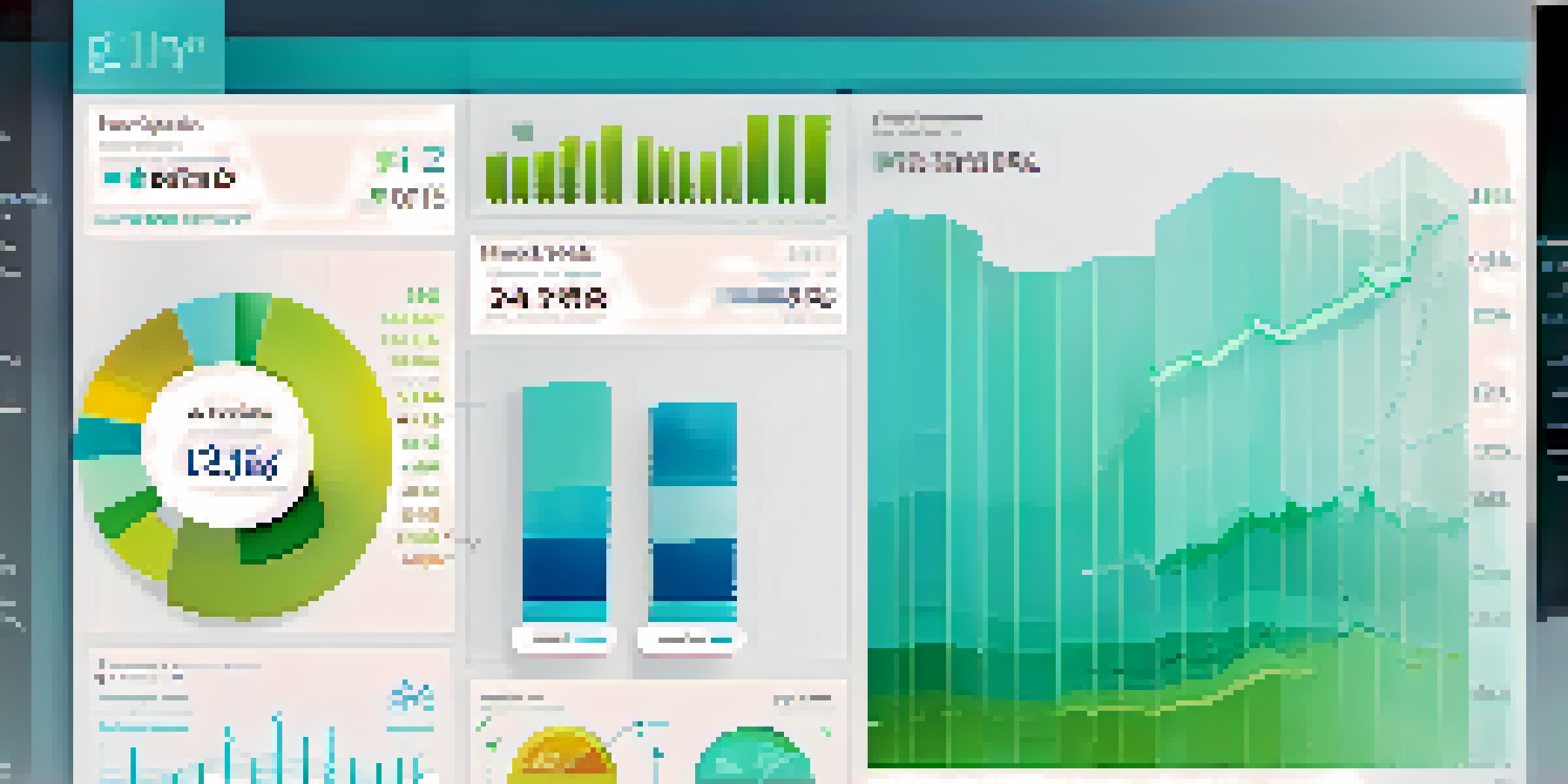The Benefits of Using Data Visualization in Real Estate Analysis

Understanding Data Visualization in Real Estate
Data visualization is the graphical representation of information and data. In real estate, it transforms complex datasets into visual formats like charts and maps, making them easier to understand. Think of it as turning a dense novel into a colorful comic book—suddenly, the key points become clearer and more engaging.
Data is the new oil. It's valuable, but if unrefined, it cannot really be used.
By presenting data visually, agents and investors can quickly grasp market trends, property values, and demographic insights. This is crucial in a field where timely information can significantly impact decisions. Imagine trying to spot a trend in a sea of numbers; a well-designed graph can highlight that trend instantly.
Moreover, data visualization fosters better communication among stakeholders. When everyone can see the same visual representation of data, discussions become more focused and productive. It's like having a shared map on a journey—everyone can follow along and contribute effectively.
Enhanced Decision-Making Through Visualization
One of the standout benefits of data visualization is its ability to enhance decision-making. With clear visuals, real estate professionals can identify opportunities and risks quickly. For instance, a heatmap showing property demand across different neighborhoods can guide investors to make informed choices.

By synthesizing various data sources into one visual, decision-makers can weigh their options more effectively. It’s akin to having a bird's eye view of your options, where you can spot the best paths forward. This holistic perspective is invaluable in the fast-paced real estate market.
Visual Tools Enhance Decision-Making
Data visualization allows real estate professionals to quickly identify opportunities and risks, improving their decision-making process.
Furthermore, effective visualization helps to predict future trends, allowing stakeholders to strategize ahead of time. By analyzing historical data through visual tools, one can forecast changes in the market, much like an experienced sailor reading the weather patterns before setting sail.
Identifying Market Trends with Visual Tools
Data visualization makes it easier to spot market trends that could otherwise go unnoticed. For instance, line graphs can illustrate fluctuations in property prices over time, highlighting upward or downward trends. This visual cue can prompt timely decisions in buying or selling properties.
The greatest value of a picture is when it forces us to notice what we never expected to see.
Additionally, scatter plots can reveal correlations between various factors, such as home prices and school district ratings. This insight allows real estate professionals to pinpoint what drives demand in certain areas. Think of it as connecting the dots; with each point on the graph, the bigger picture becomes clearer.
Identifying these trends not only aids individual decision-making but also helps shape broader market strategies. By understanding the landscape through visuals, agents can tailor their approaches to meet evolving buyer needs, ultimately enhancing their competitiveness.
Improving Client Engagement with Visual Data
Engaging clients effectively is crucial in real estate, and data visualization plays a significant role here. Visual tools can make presentations more interactive and memorable, capturing clients' attention and sparking their interest. A well-crafted dashboard or infographic can tell a story that resonates with potential buyers and sellers.
When clients can visualize market data—like property locations, price ranges, and neighborhood features—they are more likely to feel informed and empowered. This transparency builds trust and fosters stronger relationships between agents and clients. After all, people are more likely to act when they understand the information at hand.
Client Engagement Through Visualization
Engaging clients with visual data builds trust and empowers them to make informed decisions in real estate transactions.
Moreover, these visual presentations can simplify complex information, making it accessible to clients who may not have a background in real estate. By breaking down intricate data into digestible visuals, agents can cater to a wider audience, ensuring everyone is on the same page.
Streamlining Reporting Processes with Visualization
In the realm of real estate, reporting can often become tedious, but data visualization can streamline this process. By converting reports into visual formats, agents can quickly convey essential information without overwhelming clients with text-heavy documents. It’s like turning a lengthy report into a concise, engaging infographic.
Visual reports allow for quick analysis of performance metrics, market comparisons, and investment opportunities. Instead of sifting through pages of numbers, stakeholders can view key insights at a glance. This efficiency not only saves time but also enhances productivity.
Additionally, automated visualization tools can generate real-time reports, keeping all parties updated with the latest market data. This immediacy can be crucial in a competitive landscape, ensuring that agents are always one step ahead in their strategies.
Facilitating Collaboration Among Real Estate Teams
Data visualization fosters collaboration among real estate teams by providing a common language. When team members can visualize data together, discussions become more collaborative and productive. It’s similar to a group of friends brainstorming over a map; everyone can contribute their ideas based on what they see.
By using shared visual tools, teams can align their strategies and improve communication. For instance, a shared dashboard can display project progress, market conditions, and client feedback, keeping everyone on the same page. This alignment is essential for cohesive teamwork and achieving collective goals.
Collaboration Boosted by Visual Data
Data visualization facilitates collaboration among real estate teams, helping them align strategies and improve communication.
Furthermore, visual data can spark innovation, prompting team members to think creatively about solutions. When teams visualize challenges, they can explore diverse perspectives and strategies, ultimately leading to better outcomes in their projects.
The Future of Real Estate Analysis with Data Visualization
The future of real estate analysis is undoubtedly tied to advancements in data visualization. As technology evolves, we can expect more sophisticated tools that provide deeper insights. Imagine using augmented reality to visualize property data in real-time as you walk through a neighborhood; that’s the potential on the horizon.
With artificial intelligence and machine learning, data visualization will also become more predictive, allowing stakeholders to anticipate market shifts. By analyzing vast datasets, these tools can present forecasts that help agents and investors make proactive decisions. This shift will revolutionize how we approach real estate strategies.

Ultimately, embracing data visualization will empower real estate professionals to navigate complexities with confidence. As these tools become more accessible, those who leverage them will likely gain a significant edge in understanding and responding to market dynamics.